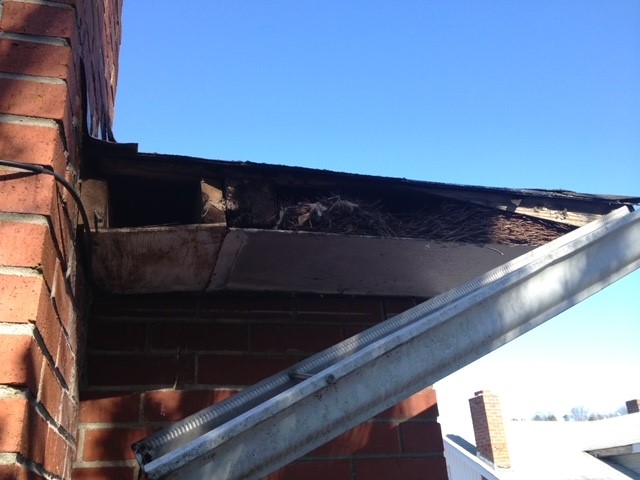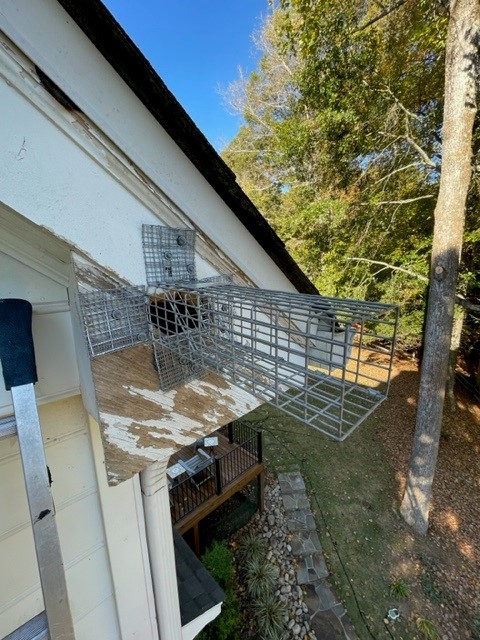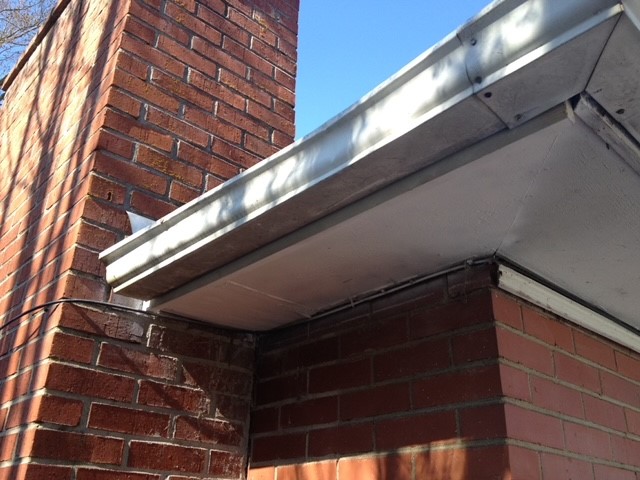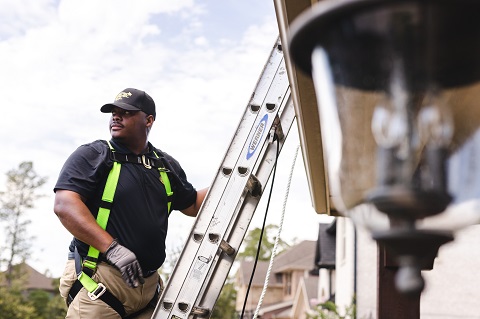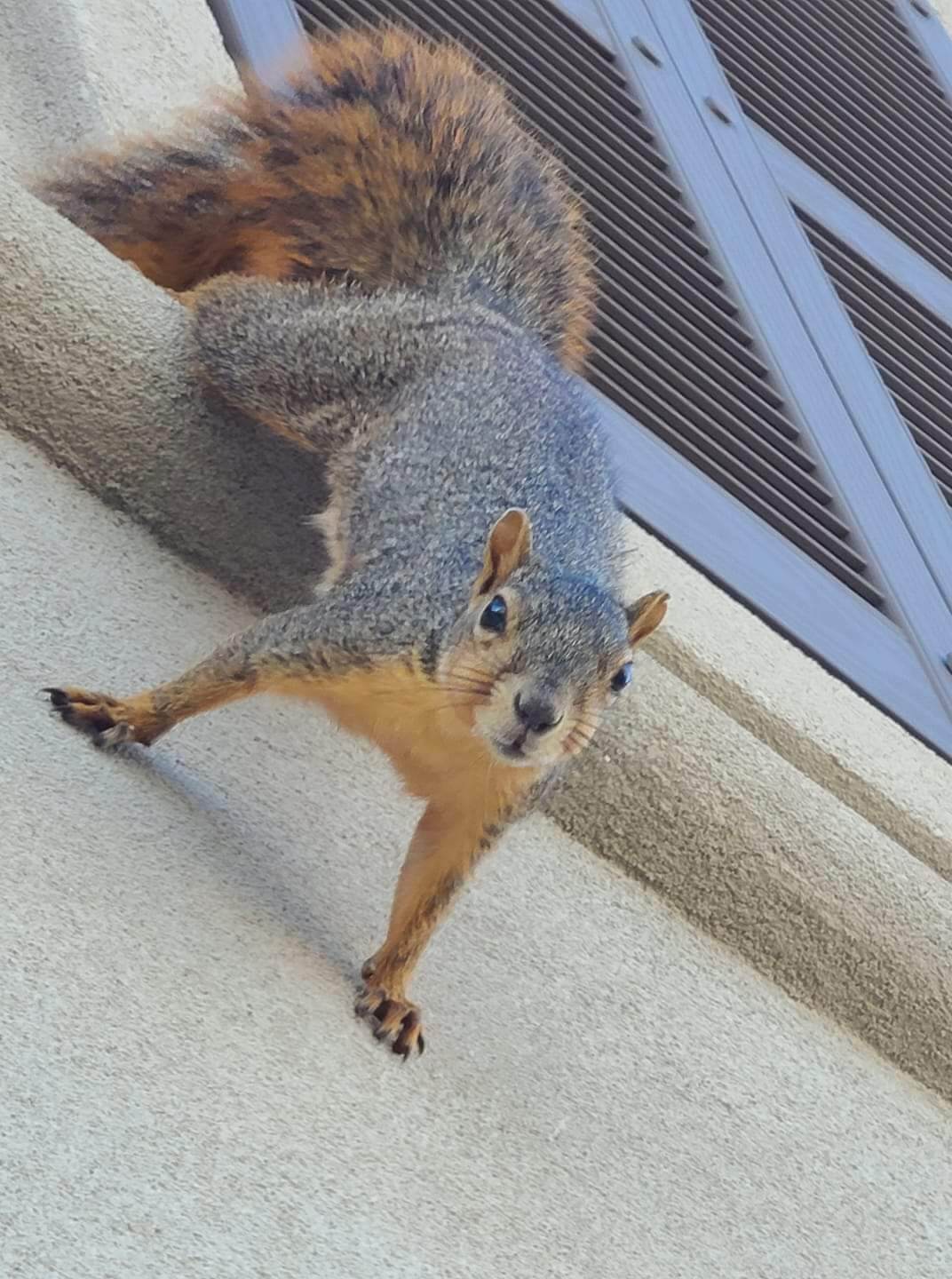
Squirrels can potentially get into attics at any time of the year, but they’re more likely to do so during certain seasons.
In the spring, squirrels might enter attics to find safe spots for raising their young. It’s essential to take preventive measures to seal off any potential entry points to your attic, especially before these seasons, to avoid unwanted guests.
In Atlanta, Georgia, squirrels may seek shelter in attics more frequently during the fall and winter months. This is because they’re looking for warm and secure places to build nests for the colder seasons.
How Critter Control of Atlanta Gets Rid of Squirrels in Attic
Getting rid of squirrels on your own can be tricky and dangerous. Squirrels are smart, aggressive, and can transmit disease. If you suspect squirrels in your attic, the best defense is to call a Critter Control wildlife specialist.
Step 1: Identify Squirrel Entry Points
The most common squirrel entry points are along your roof. Squirrels are excellent climbers and can easily access your roof.
We look for small openings with gnaw marks. Most homes in Atlanta have construction gaps along the fascia boards. These gaps allow for proper water drainage and ventilation. Squirrels can take advantage of construction gaps. In some cases, the gaps are large enough for a squirrel to squeeze through it. Other cases, squirrels an gnaw on the material creating a large enough hole for entry.
The most common entry points on Atlanta homes for squirrels are along roof such as: eaves, soffits, attic vents, gable vents, fascia boards, gutters, and chimneys.
Step 2: Squirrel Trapping in Atlanta
A one-way door is the safest method of squirrel removal. First, we locate all squirrel entry points. We seal these entry points and install a one-way door over the primary entry point. The squirrels can leave but cannot get back inside. After the squirrels leave, remove the door and seal the entry.
Note: If babies are present, you will need to retrieve the babies with proper animal handling gloves.
If a one-way door is not successful or there are babies present, using live traps with bait is another effective method to get rid of squirrels in the attic. If babies are present, you will need to retrieve the babies with proper animal handling gloves.
- Live traps should be securely placed on a roof, in an attic, or on the ground, however, choosing a location on the ground may lead to catching non-target small animals.
- When trapping squirrels, it is important to thoroughly inspect the attic before sealing entry points, because you need to ensure you catch all target squirrels.
- Step 3: Exclusion Repairs
Once the squirrels are safely removed, we identify and seal all entry points to prevent future squirrel infestations. Squirrel exclusions are the most effective, long-term squirrel control solution.
Step 4: Attic Clean-up and Sanitization
Depending how long a squirrel lived in your house will determine how much damage it caused. After squirrel removal, Critter Control will clean up droppings, remove squirrel nests, apply sanitization agents, treat for ectoparasites like felas, and in extreme cases install new attic insulation.
What are the Signs of Squirrels in the Attic?
Squirrel noises. You will hear a squirrel before you see any visual evidence, especially during winter months, where you’re less likely to notice exterior damage. The sounds squirrels make are often described as scurrying, scampering noises. You might also hear chewing or gnawing sounds. Squirrels like building their nests in attics, so sounds will often emanate from there. Squirrel sounds are often mistaken for rat sounds, but there’s one key difference: squirrels are diurnal, so you’ll hear them during the day, whereas rats are nocturnal, and will make more sound at night.
Squirrel nests. Squirrels are well known for nesting in attics, as they provide a safe hideaway for squirrels to raise their young. The inside of an attic is also full of things for them to nibble and sharpen their ever-growing teeth on, like wood and insulation. When a squirrel chews the insulation on electrical wiring, the possibility of a house fire arises. Squirrels enter attics through crevices, gaps, and cracks in soffits, fascia boards, and eaves, or open vents or broken shingles in the roof. Once squirrels reach the attic, they have free reign of the house.
Squirrel Droppings. Squirrel droppings are often confused for rat droppings, and vice versa. While rat and squirrel droppings do look similar—dark brown to black with blunted ends, around 3/8 of an inch long—they are found in different places around the home. Squirrel droppings are often found in attics or around tree trunks, while rat droppings are more common along baseboards, in cupboards, and behind large appliances like washing machines.
Damage to roof. Another popular nesting site for squirrels is in the roof. Typically, they build these nests with roofing insulation. Take some time to carefully analyze your home’s exterior. Squirrels commonly damage roofs by:
- Chewing holes in soffits. This can allow other small pests to invade your home.
- Biting through shingles. This can lead to water damage.
- Gnawning through joists and siding. This can weaken your home’s structure.
What Damage Can Squirrels Cause in Attics?
Squirrels often cause damage to attic insulation or electrical wiring in the attic. But the most damage is done over time as multiple squirrel litters are born in or near the home. As these squirrels grow and leave the nest, they often build nests within the same attic. If the initial intrusion is not addressed in time, the damage to your home will increase quickly. Not only will they continue to chew through wiring and damage insulation, but in doing so, they will create more entry points for other squirrels.
Should I Call an Exterminator to Get Rid of Squirrels in the Attic?
Using an exterminator for squirrel control in Atlanta is not a good pest control strategy. Exterminators are state-licensed technicians trained to control pests using chemicals. They apply solutions to interior and exterior spaces of homes, offices, restaurants, warehouses, and other structures.
Chemical and natural repellents will occasionally work but provide a short-term solution. Most mammals will grow accustomed to the repellent or deterrent. There are no toxicants registered for squirrel exterminators. It is inhumane. Also, killing a squirrel in your house creates another problem for you.
Who Should I Call for Squirrel Removal in Atlanta?
The professional wildlife control operators at Critter Control understand everything about squirrels, especially those that become a nuisance to property owners. They are certified and trained in methods to prevent, remove, and exclude wildlife from your home or office. Wildlife control operators avoid using chemicals and toxic products that kill, as they are unethical, inhumane, and rarely provide long-term squirrel control solutions.
Critter Control in Atlanta specializes in squirrel removal. In order to remove a squirrel or family of squirrels on your property, our wildlife specialist will perform a thorough inspection to determine the severity of the problem. After the inspection, they will build a custom solution to trap, remove, and seal all entry points. They will also provide warranty options as well as an estimate for preventative services.



